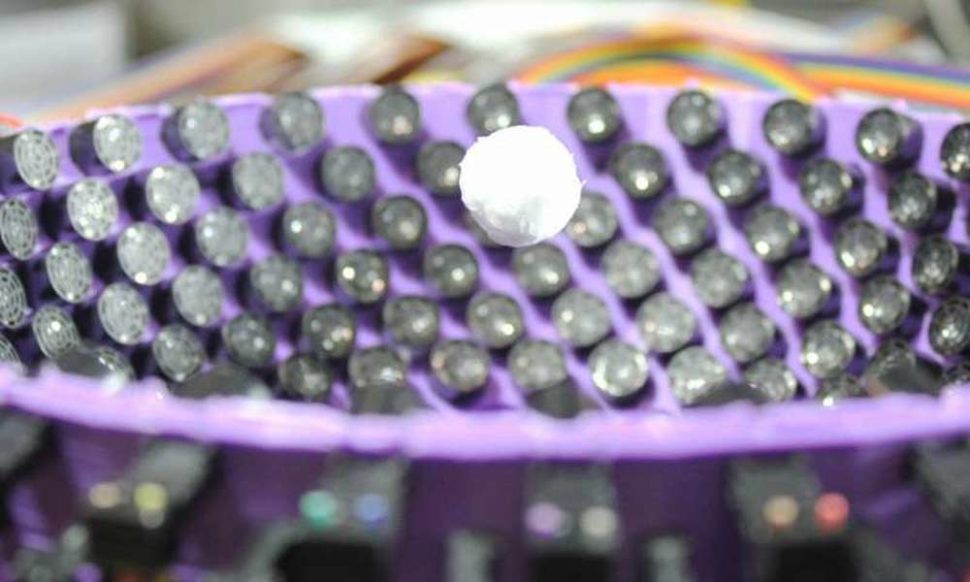A recent tractor beam study may potentially enable levitation of large objects including humans.
Years of research might have finally lead to one of the most significant practical breakthroughs in the history of Physics: the ability to levitate large objects. A team of scientists from the University of Bristol in the United Kingdom has reportedly succeeded in trapping objects larger than the wavelength of sounds using an acoustic tractor beam.
Read: Nanomagnet Levitation has Been Stabilized by Quantum Physicists
Previously, researchers believed that acoustic tractor beams were only capable of levitating small objects as all attempts to trap objects larger than the wavelength of sound failed. Apparently, larger particles tend to spin uncontrollably, making them unstable. According to research, this is due to the transference of the rotating sound field‘s rotating motion to the objects which cause them to orbit faster until they are thrown out.
@BristolUni researchers found a way to levitate humans in the future using an acoustic tractor beam. Click To TweetIn a paper published in the journal Physical Review Letters, the researchers, led by Dr. Asier Marzo from Bristol’s Department of Mechanical Engineering, explained how they successfully did what other scientists failed to accomplish using a new approach.

Levitating Human-Sized Objects Using an Acoustic Tractor Beam
By using fluctuating acoustic vortices, which the Bristol researchers described as something similar to sound tornadoes, the team discovered that it is possible to control an object’s rate of rotation. According to their study, the tractor beam can be stabilized by rapidly changing the twisting direction of the vortices.
“Acoustic vortices can transfer angular momentum and trap particles. Here, we show that particles trapped in airborne acoustic vortices orbit at high speeds, leading to dynamic instability and ejection,” the researchers wrote.
We demonstrate stable trapping inside acoustic vortices by generating sequences of short-pulsed vortices of equal helicity but opposite chirality. This produces a “virtual vortex” with an orbital angular momentum that can be tuned independently of the trapping force. We use this method to adjust the rotational speed of particles inside a vortex beam and, for the first time, create three-dimensional acoustics traps for particles of wavelength order (i.e., Mie particles).”
After stabilizing the tractor beam, the team was then able to increase the size of the silent core which allowed the device to hold larger objects. During their experiment, Marzo and his colleagues successfully held a two-centimeter polystyrene sphere in the tractor beam using ultrasonic waves at a pitch of 40kHz, a pitch similar to what bats could hear.

The sphere measures two acoustic wavelengths, the largest ever trapped in a tractor beam to date.
“Acoustic researchers had been frustrated by the size limit for years, so its satisfying to find a way to overcome it. I think it opens the door to many new applications.” – Dr. Asier Marzo, University of Bristol
The team believes that their approach could potentially keep larger objects afloat in the near future. Dr. Mihai Caleap, a senior research associate of the project, said:
“In the future, with more acoustic power it will be possible to hold even larger objects. This was only thought to be possible using lower pitches making the experiment audible and dangerous for humans.”
Aside from levitating humans, other practical applications of the Bristol team’s research may include contactless production lines for manufacturing fragile objects without the need to touch them and improve surgical operations that require microscopic devices to be implanted into the patient’s body.



















Could this clean air and reject particles outdoors? Personally used as a sleeve, bigger equipment for cafes and terraces.
I think that’s a good idea to explore!